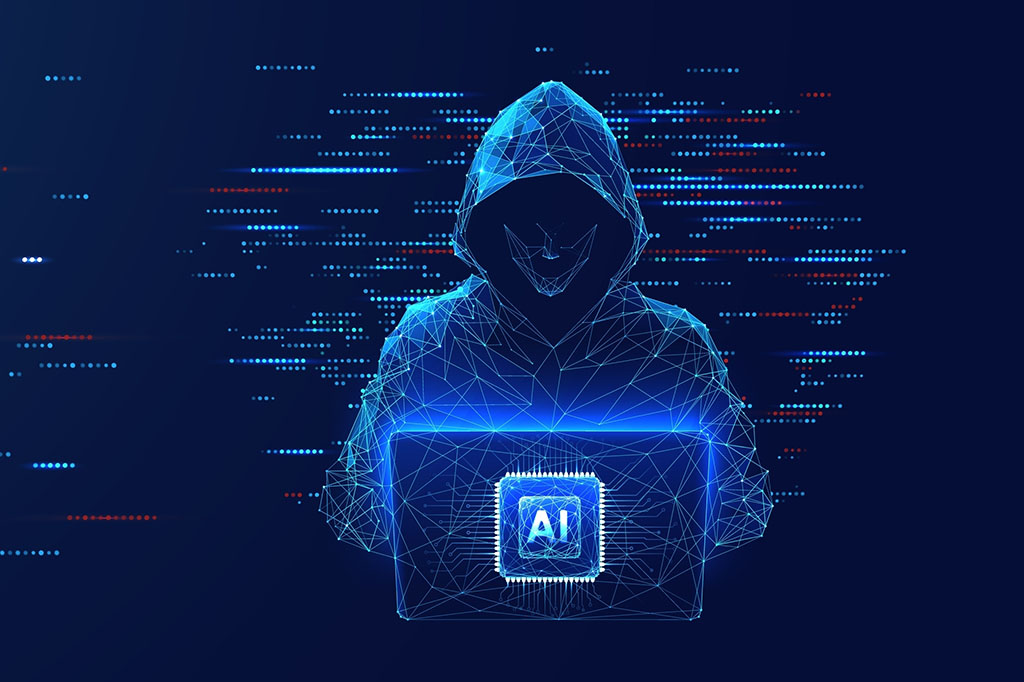
AI Is Now Writing Malware Starting a Digital Nightmare That Could Change the Landscape of Cybersecurity
We’ve heard about the potential dangers of artificial intelligence for years, but now, the reality is here, and it’s even more terrifying than we imagined. HP recently uncovered an email campaign that didn’t just deliver the usual malware – it deployed a malware dropper created by AI itself. This discovery marks a chilling new frontier in cyberattacks, and it’s something every digital user should be afraid of.
When AI Becomes the Hacker
This is no ordinary phishing attack. In June 2024, HP’s security experts stumbled upon a phishing email posing as a typical invoice. However, buried within the email was an encrypted HTML file that immediately raised red flags. The attackers didn’t send a ready-encrypted file, which would have been the norm. Instead, they embedded the AES decryption key right into the attachment’s JavaScript code—a crafty move designed to avoid detection.
IS YOUR COMPUTER SECURE?
FREE Malware Removal
Detect & Remove Adware, Viruses, Ransomware & Other Malware Threats with SpyHunter (FREE Trial)
IS YOUR COMPUTER SECURE?
FREE Malware Removal
Detect & Remove Adware, Viruses, Ransomware & Other Malware Threats with SpyHunter (FREE Trial)
IS YOUR COMPUTER SECURE?
FREE Malware Removal
Detect & Remove Adware, Viruses, Ransomware & Other Malware Threats with SpyHunter (FREE Trial)
Once HP decrypted the attachment, they found what looked like an innocent webpage. But behind the scenes, a VBScript was waiting to unleash AsyncRAT, a widely available infostealer. The script not only planted malware but also modified system registries, created JavaScript tasks, and executed PowerShell commands. While this setup isn’t new, one shocking detail jumped out: the script was highly organized and loaded with comments—something you rarely see in malware.
What’s even more unsettling is that the script was written in French, a language not often associated with malware development. This unusual behavior led HP’s team to an alarming conclusion: the dropper was likely generated by AI.
The New Face of Cybercrime: AI-Generated Scripts
To test their hypothesis, HP used their own generative AI to create a similar script. The results were nearly identical, reinforcing the belief that AI played a key role in creating the malware. But here’s where things get scary. Why wasn’t the malware encrypted? Why were there so many helpful comments left in the code?
The answer could be a sign of something even more dangerous—AI is lowering the barrier for new cybercriminals to enter the game. People with minimal coding experience can now produce advanced malware by using AI tools. Alex Holland, HP’s principal threat researcher, believes this is exactly what happened in this case. The attacker was likely a novice who relied on AI to fill in the technical gaps, leaving behind telltale signs like commented code and unencrypted scripts.
This attack wasn’t sophisticated—AsyncRAT is free and easily accessible, and the techniques like HTML smuggling don’t require high-level coding skills. But the scariest part is that this amateur hacker might just be the beginning.
Is AI Enabling the Next Generation of Cybercriminals?
If a rookie cybercriminal can use AI to generate basic malware, imagine what seasoned hackers can do. AI can be used to produce highly complex, obfuscated code that’s virtually undetectable. While this particular attack left some clues pointing to AI involvement, more experienced adversaries could easily cover their tracks, making it impossible to distinguish between AI-generated malware and that made by human hands.
“We’ve long suspected that AI could be used for malware creation,” says Holland. “Now we have concrete evidence that it’s happening in the wild.” This isn’t just a glimpse of the future—it’s a sign that AI-driven cyberattacks are already unfolding before our eyes.
The Threat is Growing Faster Than You Think
The rise of AI-generated malware represents a massive shift in the digital threat landscape. The capability of AI is advancing at breakneck speed, and as it evolves, the danger it poses only increases. Holland believes that within the next couple of years, we’ll see fully AI-generated malware payloads being deployed in cyberattacks—and they’ll be much harder to detect and defend against.
The idea that AI could be weaponized in such a way isn’t a distant concern anymore. It’s here, it’s happening, and it’s only going to get worse. The lines between human-created malware and AI-generated threats are blurring.
What Can We Do to Protect Ourselves?
It’s essential to recognize that the traditional methods of fighting cyber threats may not be enough. The cybersecurity industry needs to adapt fast. If AI is writing malware, then AI must also be used to fight it. More advanced security solutions that leverage machine learning and AI to detect and mitigate these threats will be vital in the coming years.
For the average internet user, staying safe means practicing basic online hygiene: don’t open suspicious emails, keep your software updated, and ensure you have reliable anti-malware tools installed.
We are entering a digital battlefield where AI is becoming the weapon of choice for cybercriminals. And, as Holland grimly suggests, “They’re here already, and it’s only a matter of time before you’re next.” Be prepared for a future where AI isn’t just creating the tools we use—but also the threats we face.